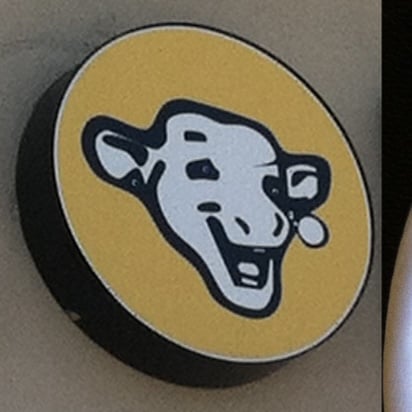A few poems written in Sumerian times, around 2100 BCE, have this starting line or similar (in those far remote times, in those days when heaven and earth were created…). The instructions of Shuruppak, Gilgamesh, Enkidu and the Netherworld (not actually part of the compiled Epic), Enki and Ninmah, the Flood part of the Gilgamesh Epic…
- 0 Posts
- 11 Comments
Ennigaldi-Nanna lived in the mid 6th c. BCE, she was the daughter of Nabonidus, last king of the Neo-Babylonian empire just before Cyrus steamrolled through the whole place. She was the high priestess of Ur - and the first museum curator in History. Her dad, like many other kings between Sumer and Babylon, went around rebuilding temples that were up to 1500 years old in his time, but he picked up more stuff to bring back home.
Ennigaldi-Nanna built herself a special room with shelves where she lined up objects that were dated between 1400 and 2000 BCE, having them cleaned and restored, and she placed clay tablets next to them to explain what they were, where they came from, who made them. In three languages. In a room open to the public.
It’s believed that she was present on sites when those objects were picked up. Some of those were from Ur, the city of her temple - her position as high priestess in that temple had been abandonned for a few hundred years before her temple was restored (because her dad was a big fan of the Moon god Nanna and this was his main temple for over a thousand years), so she may have just needed to look around and pick a shovel and a good brush. Nabonidus is also considered “the first serious archaeologist”, antiquarian and antique restorer.
Some of the artifacts from Sumer and Babylon that are most famous today, oldest and best preserved, come from that museum. We found a 2500 year old museum, and we put it in a museum.

 3·8 days ago
3·8 days agohttps://en.wikipedia.org/wiki/Bambi:_The_Reckoning
Bambi’s public domain now.

 4·17 days ago
4·17 days agoJust write an email
Just call them
Yeah no thanks
I’ll just scan for their name in the papers.

 21·20 days ago
21·20 days agoSo like, 80% of the consumer base, then. It’s already bad if it’s only 20% anyway.

 7·23 days ago
7·23 days agoyes, its the navel gazing voters who are to blame here:
He was speaking at a private fundraiser, I don’t think he was talking about the voters. It was about the party looking around for a strong leader and doing nothing while ignoring the various races that were actually going well against the right.

 1·23 days ago
1·23 days agoFood, for starters.
Video games can teach a lot of History and mythology from all over the world when you’re young that you’ll never learn anywhere else. You’re good.

 1·25 days ago
1·25 days agoRight, it would be better.

 0·2 months ago
0·2 months agoAre they all developers?
No, those texts are about the time of the building of their own cities and civilization. The older big Sumerian cities are dated back between like 6000 and 3000 BCE (with Eridu around 5500 BCE). That’s what the faraway days are.
The instructions of Shuruppak, the oldest known example of that line, is dated about 2600 BCE give or take, and it’s talking about the city of Shuruppak and a king teaching his son Ziusudra. Ziusudra is later named as the Flood survivor in the Gilgamesh texts starting 2100 BCE, and the Flood in question is believed to point to one particular flood that destroyed Shuruppak around 2900 BCE (it got better).
The Sumerians of the Ur III period who wrote those texts (at least put them in writing from a probable older oral tradition) perfectly knew their civilization was old AF, more than a thousand years. The use of Ziusudra / Utnapishtim in the Flood narrative of Gilgamesh almost definitely points to the Instructions of Shuruppak, a text the later Sumerians and Babylonians also made copies of, being the specific “wisdom from the time before the Flood” that Gilgamesh brings back from meeting the guy. Like, they’re saying Gilgamesh is the reason they all got copies of what Ziusudra’s dad told him about how to make a city right - because Ziusudra repeated to Gilgamesh what his dad taught him (just before his city was wiped by the gods). It’s also probably an explanation on why that specific line, “in those days, in those faraway days”, is repeated in Gilgamesh, because it’s in the Instructions. The “death of Gilgamesh” poem goes like this
And as a bonus, the Shuruppak flood would be around 2900, Gilgamesh would have lived around 2700, and the oldest copy of the Instructions is from around 2600, so even that timeline matches in their reconstruction if we imagine they figured that out correctly (or more realistically, Shuruppak was rebuilt after the flood destroyed it and that’s when they wrote it themselves).
Proto Indo Europeans have no connection to them, no genetic, geographical, or cultural connection. They are probably a bit later than the older Sumerian cities, even.